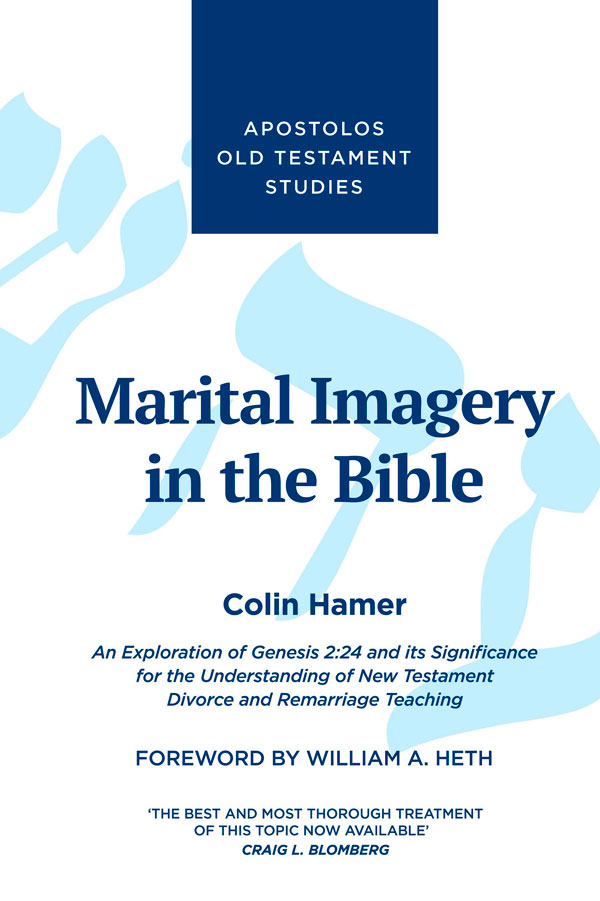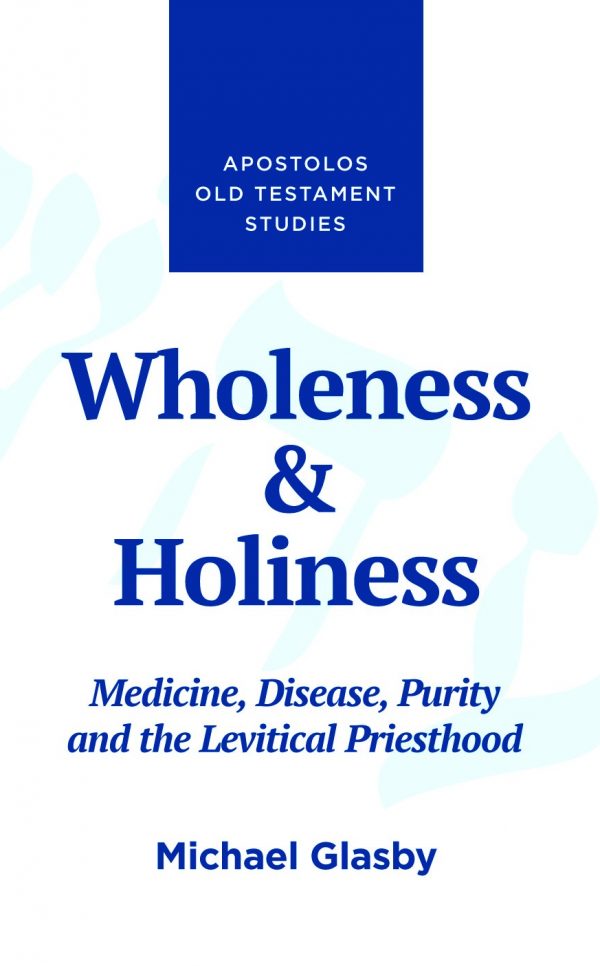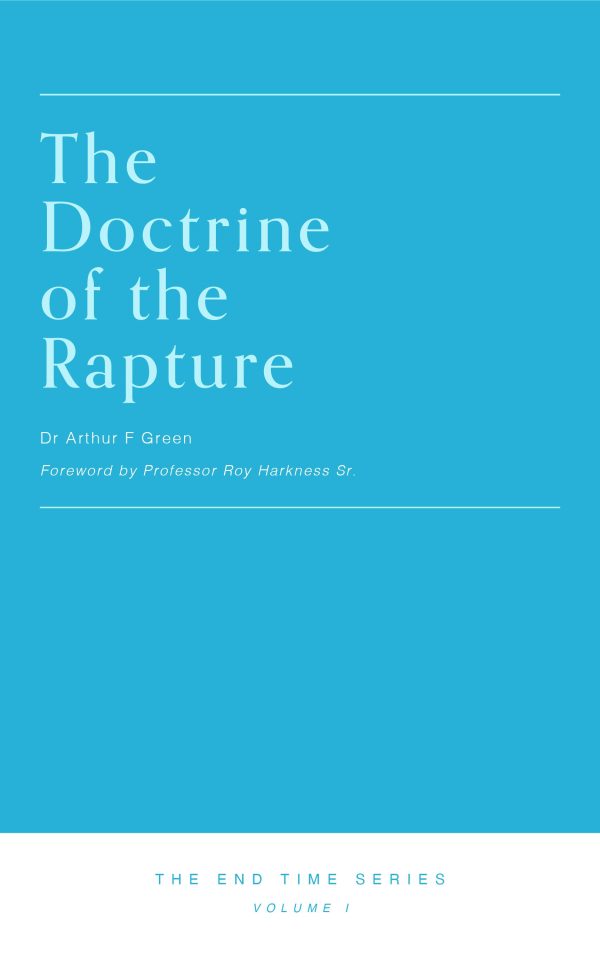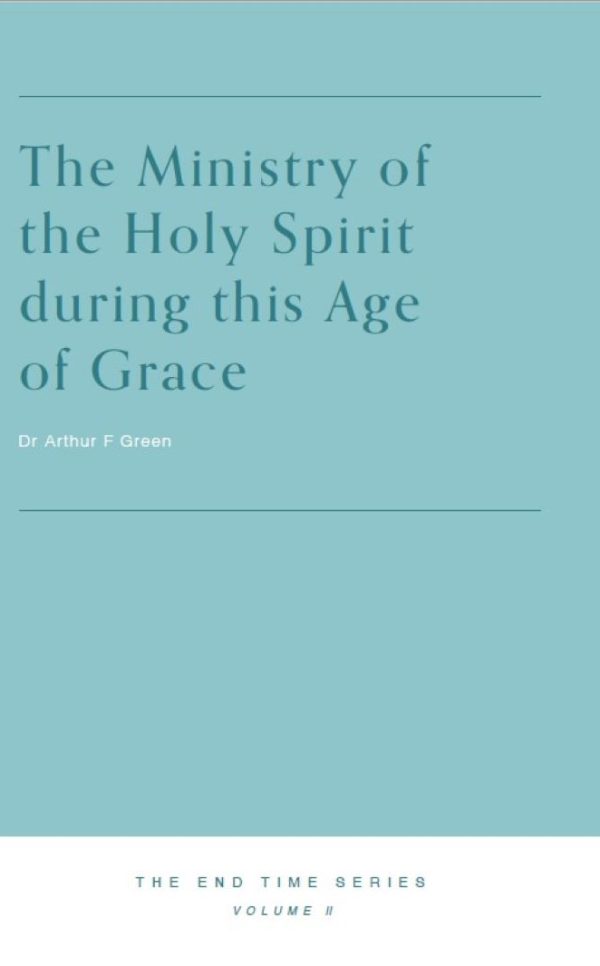Description
Marital Imagery in the Bible. It can only be imagined that when the New Testament writers made their (albeit brief) comments on divorce and remarriage that they assumed they would be understood. So what has gone wrong?
In the years after the destruction of Jerusalem in 70 CE, when Graeco-Roman culture was at its height, the Jewish perspective of marriage and divorce, and thus the context of those brief New Testament comments was lost. The Christian church of that era was influenced by the neoplatonic ideas of the day, and an idealised concept of marriage developed from on Adam and Eve’s marriage recorded in Genesis 2:23—it was love at first sight, a marriage made in heaven. These concepts frame an understanding of marriage in much of Western culture even today.
However, that was never the understanding of ancient Israel. Instead they looked to Genesis 2:24: ‘Therefore a man shall leave his father and his mother and hold fast to his wife, and they shall become one flesh’—so a naturally born man chooses a wife for himself, and their union was based on a ‘covenant’—in other words an agreement. The Old Testament makes it clear what the basis of that agreement was. Furthermore, it is clear, if that agreement was broken, there could be a divorce and a remarriage. All the Bible’s marital imagery (where the Hebrew and Christian Scriptures imagine that God is married to his people) is based on that understanding of human marriage.
But so strong is our concept of marriage, that when Genesis 2:24 is referred to in the New Testament, it is thought that the reference is to Adam and Eve’s marriage. It is a paradigmatic marriage that for many excludes (or greatly restricts) the possibility of divorce and remarriage.
This study looks to challenge that paradigm—and to suggest that the New Testament writers would not have employed an imagery which had at its centre divorce and remarriage, only to deny the possibility of such in their own human marriage teaching.
Colin Hamer’s thesis represents the only recent work on metaphor theory in biblical scholarship. It challenges centuries of academic scholarship and ecclesiastical assumptions about divorce. Hamer’s detailed and well researched analysis challenges the consensus view that the marriage of Adam and Eve in Gen 2:24 represents an ontological unity, suggesting important implications for contemporary Christian teaching on marriage and divorce.
This title is also available for download as an Ebook here.




Mathew Bartlett –
“This book makes a crucial contribution to understanding the Bible’s teaching on marriage, divorce and remarriage. Colin builds on studies on the Divine marriage (God’s relationship with his people, Israel; and Christ’s relationship to the Church). He uses a brilliantly logical and clear cross-mapping methodology to show how the Divine marriage relates to volitional human marriage in Gen 2:24. Colin then used this unique approach to grapple with the whole of the Bible’s teaching on marriage, divorce and remarriage, while still tackling key texts in depth. The result is that Colin has made a strong challenge to traditional views on divorce and remarriage, and goes on to provide a view that is solidly grounded in the Bible, rather than just using common wisdom.
I also highly recommend the chapters on the Divine marriage for understanding the Bible’s redemption story-line. It helps the reader by understand what God is doing with his people in both testaments, and the implications of how God’s people were treating Him. Although this is a technical study, it is a very rewarding read.” – H. Davis on amazon.co.uk
Mathew Bartlett –
Colin Hamer’s book represents the only work in biblical scholarship that embraces recent developments in metaphor theory in its consideration of marital imagery. It challenges academic and ecclesiastical assumptions about divorce. Basically, this highly detailed analysis contests the consensus view that the marriage outlined in Genesis 2:24 indicates an ontological reality that replicates the union of Adam and Eve. Previous popular books on the subject have looked at marriage, divorce, and remarriage from a constricted standpoint; in this book, Hamer takes readers to a whole new level, providing a more comprehensive understanding.
Personally, I come from a very conservative background, and on this subject I must confess to being deeply challenged – you will be too.
Mathew Bartlett –
“It is reasonable to ask, “Is there any need for another book on Marriage, Divorce and Remarriage in the Bible?” One possible answer would be, “Yes, if that book gives greater insight into the Bible’s teaching, approaches the question from a new perspective and is thorough in its examination of the relevant texts.” Colin Hamer’s book does just that. As you might expect, the book begins in Genesis 2 verses 23 and 24. It is here that fresh insight is most helpful. Hamer notes the two marriages in these verses: the first is a literal one flesh union unique to Adam and Eve in verse 23; the second, in verse 24, is a metaphoric one flesh union that widens the perspective and applies to all earthly marriages. Indeed it is only the principles underlying this second, metaphoric union that apply to all marriages. Hamer then employs Metaphor Theory and Cross Domain Mapping (which he thoroughly explains) to examine the rest of the Bible’s references to Marriage and Divorce. He examines the Old Testament Metaphor of Yahweh: The Husband of Israel and the New Testament Metaphor of Jesus: The Bridegroom of the Church. This may all be familiar ground. What is new is the way he then draws on these metaphors to examine Sin as the husband of unredeemed humanity, the Church as the Body of Christ, and Paul’s treatment of the Body of a Prostitute in 1 Corinthians 6. A necessary examination of Marriage and Divorce practices in the Ancient Near East and the Inter Testamental period, leads us finally to apply these findings to Marriage, Divorce and Remarriage teaching in the Old and New Testaments.
Although the book’s conclusions have been stated before, no other author has arrived there via such a thorough consideration of the marital imagery of the Bible. This gives the book freshness and makes it a valuable contribution in this most disputed area. It needs to be said that this work is based on the author’s Doctoral thesis. Therefore, it is not an easy read and may best be suited to those who have some prior experience of theological study. It is hoped, however, that the author will write a more popular version for general readership.
One other reason to commend this book is the forward by William Heth in which he explains that his own views on Divorce and Remarriage have changed since their expression in the book co-authored with Gordon Wenham in 1985. He no longer believes that the Bible teaches that a “duly covenanted and consummated marriage results in a mystical, ontological, indissoluble union which is permanent this side of death” (from the Foreword). This book comes to the same conclusion and is worth reading even if the reader may, at present, hold a different view.” – Jeremy Bailey on amazon.co.uk
Mathew Bartlett –
“I have been a Christian for many years and while from time to time I would question conventional interpretation on important Biblical doctrines within the Church, I have tended to follow common wisdom and practice. One area however that I remained uneasy about is common teaching on marriage and divorce. This remarkable book has changed that. It has brought considerable clarity to the subject and I am indebted to the author for the compelling Biblical interpretation of marriage and divorce that is consistent with Old and New Testament teaching. It has challenged my thinking as a church leader. The author gives a well argued, brilliant exposition that has replaced my muddled understanding on marriage with an interpretation that has a solid Biblical foundation. Thank you Dr Hamer.” – an Amazon customer
Mathew Bartlett –
“This is a remarkable study. Hamer’s analysis of Genesis 2:24 both in its original context, and of its employment in the New Testament, is insightful, and as far as I am aware, unique in biblical scholarship. The analysis shows, among other things, that Paul in Ephesians 5:31-32 believes Genesis 2:24 to be a protoevangelium and a foreshadowing of the inclusion of the Gentiles in God’s plan of salvation—placed in the scriptural record before the Fall. The logic of Hamer’s analysis is followed through to a consistent, and to my mind, convincing exegesis of New Testament divorce and remarriage teaching.” – Trevor Baker, from amazon.co.uk
Mathew Bartlett –
“In this important and thoroughly researched thesis, Dr Hamer has resolved the conundrum of God’s concern for marriage and the texts of scripture that appear to give conflicting instructions about people who are divorced. It provides a vitally important insight into God’s healing solution for those who, like Himself, have experienced the rejection of their love.” – Rev Dr Tom Holland, Senior Research Fellow, The Wales Evangelical School of Theology
Mathew Bartlett –
“Hamer’s appeal to marital imagery throughout Scripture and how it informs our understanding of the NT teaching on divorce and remarriage is brilliant.” – William A. Heth, Professor of Greek and New Tesament, Taylor University, Upland, IN
Mathew Bartlett –
“This novel approach incorporates a holistic view of Scripture that produces surprisingly enlightening insights. Regular summaries guide the reader through a detailed analysis using modern metaphor theory to arrive at a valuable conclusion.” – David Instone-Brewer, Senior Research Fellow, Tyndale House, Cambridge
Mathew Bartlett –
“In this book Hamer presents a fresh and persuasive new perspective on the Old Testament roots of New Testament teaching on marriage, with great significance for contemporary debates on the nature of Christian marriage. It deserves to be widely read.” – Professor David Clough, Professor of Theological Ethics, Department of Theology and Religious Studies, University of Chester
Mathew Bartlett –
“In this work Dr. Hamer challenges many centuries of academic scholarship and ecclesiastical assumptions about divorce. Readers will find substantive arguments based on the Judeo-Christian scriptures, extra-biblical writings, and metaphor theory. The writer’s unique contribution ventures beyond Dr. Instone-Brewer’s groundbreaking work on the topic and conceptualizes not only the Judeo milieu of divorce statements in the Old and New Testaments but how key passages such as Genesis 2:23-24 may impact the possibility of divorce in gospel and epistolary literature. Many contemporary scholars look at marriage, divorce, and remarriage from a constricted standpoint; Dr. Hamer takes readers to an unprecedented level in order to provide a broader understanding. Readers will not go away unchallenged.” – Richard M. Cozart, Professor at College of Biblical Studies, Houston, Texas
Mathew Bartlett –
“Hamer… challenges the consensus view that the marriage of Adam and Eve in Gen 2:24 represents an ontological unity in marriage, suggesting several important implications for marriage and divorce. Hamer is to be commended for assembling this material and his conclusions should be considered in further discussions of the marriage metaphor.” – Phillip J. Long, Professor of Bible and Biblical Languages, Grace Bible College, SW
Mathew Bartlett –
“When I was offered the opportunity to review Colin Hamer’s book on marital imagery in Scripture, I jumped at it because, well because, I’m interested in both marriage (my own and that of persons I mentor in this area) and what the Bible has to say about it. It’s also something that seems to separate many Christians from other Christians – sometimes because of who they marry, sometimes because of who they leave or divorce, and sometimes simply because they remarry.
At the same time I knew I was getting into something that might challenge my own thinking as to what I personally believed. Finally, having been familiar with other material from this publisher by authors of similar academic achievement, I knew I would be stretched intellectually by this book. I report to you that I was not disappointed on any count.
For those very reasons, I decided to take a laymen’s approach to what was bascially Colin Hamer’s thesis document presented in June 2015 for his degree of Doctor of Philosophy. One of his supervisors for that was Tom Holland, author of another book I had reviewed entitled Hope for the Nations based on Romans. Hamer, perhaps a little too conveiently, relies on many of Holland’s other work.
Let me try and speak the common man’s English here rather than the highly academic approach Hamer rightly took.
The book takes great care to spell out the difference between the marriage described in Genesis 2:23 and the one described in Genesis 2:24. Many of us have, I am sure, taken those two verses to refer to the same type of marriage. Hamer points out, through careful examination, how different these two are (vs. 23 talking about a marriage that directly required the involvement of God; and vs. 24 talking about mundane or regular marriage). And he does so very convincingly.
He then moves on to introduce his readers to all sorts of metaphors and language terms that are outcomes of variations of metaphors used in the Scripture and especially how they apply to the imagery of marriage in the Bible. (Have I lost you yet? I hope not, because the conclusions are most significant and relevant. So hang in there.)
The author also relies heavily on what Israel was actually practicing and understanding to be mundane or regular marriage. He correctly points out that in order for God’s teachings, especially those delivered to His people through metaphors, to be comprehended properly, one has to deduce that they are best understood in the meaning of the words used in the metaphors that they are familiar with. That is, he argues that the Scriptures would not employ an imagery that did not reflect a social reality.
Hamer, mainly because a good doctoral thesis has to, examines all (or so it seems due to the numerous references) the helpful literature available from ancient times through to the early centuries of the church. So, not only does he address what the Old Testament was saying to Israel, but also what Jesus, and later the Apostle Paul, was saying to the New Testament believers, and thus to us. Just learning what the secular and church literature contains is well worth the read.
Those who write movie reviews caution me not to provide “spoilers” and so I won’t even here. But allow me to give you some hints:
ν Through the ages the church may have incorrectly used the marriage in Genesis 2:23 as the model to apply to our current marriages and thus to forbid divorce.
ν If, as one scholar suggests Israel metaphorically married and later divorced Egypt, then when God took her as His people at Sinai, was He uniting Himself to a divorcee?
ν If God divorced Israel as various Scripture suggests, how could she come back to Him unless remarriage was allowed?
ν At its foundational basis, what was the purpose of any divorce decree except that one could be free to remarry?
The author also explores thoroughly the role of Jesus as a bridegroom and the Church as His Bride. And through the study of what Christ had done and would do for His Bride, comes to some very interesting and not at all heretical conclusions about divorce and remarriage.
To the chagrin of males, there seems to be greater onus on the husband to keep the marriage together. He is also under greater restrictions than the wife when it comes to leaving a marriage. There is no doubt that God’s original hope and desire for marriages was that they not end in abandonment or divorce, but rather remain as per the Edenic marriage of Adam and Eve. Hamer postulates this will once again be accomplished when Christ returns to take up His Bride.
This is indeed a scholarly tome and not your light summer reading. I certainly do not recommend it for someone who only enjoys a book that can be read easily without the need for some concentration. But even some of them will want to read it to gain insight into what the author believes the Bible allows with respect to separation, divorce, and remarriage. Many will be surprised and they may find they had been right all along. A must read for all Bible scholars, pastors, and Christian marriage counselors.” –
Ken B. Godevenos, Accord Resolution Services Inc., Toronto, Ontario. 16/01/09 on amazon.com
Mathew Bartlett –
“Excellently written and a work of fine scholarship, this work’s audience is theologians rather than lay people. To compare with works in medicine: those dealing with the etiology of a disease without also addressing treatment belong in medical libraries, and are the domain of physicians rather than providing guidance for the general public. And Marital Imagery does address aetiology (Hamer’s spelling, reflecting his British English). To pursue the medical metaphor: the Christian church’s understanding of the nature of marriage and its attendant ailment, divorce, has been blighted from disease since losing its grounding in first-century culture. Pastors and lay readers might prefer to wait for Hamer’s forthcoming derivative work to discover how best to implement a remedy. Meanwhile, all Christian theologians should read it, regardless of denominational affiliation.” – Ian Fairclough, on amazon.com
Mathew Bartlett –
“Hamer convincingly defends the view that from the earliest days of the Old Testament, through the intertestamental period, and throughout the New Testament, marriage was never seen as indissoluble. Provisions for divorce and remarriage were always present; even when someone was divorced wrongly they did not enter into a legal fiction by which they were still married to their previous partner in God’s eyes. Particularly helpful is Hamer’s use of metaphor theory to show the extent to which the Bible uses marriage-divorce-remarriage analogies with God’s (and Jesus’) relationship with his sometimes wayward people. The best and most thorough treatment of this topic now available from the perspective of the relationship between the metaphors and reality.” Craig L. Blomberg, Distinguished Professor of New Testament, Denver Seminary
Mathew Bartlett –
“Sometimes, when one least expects it, in scholarship, certain works appear that are groundbreaking, programmatic, and game-changing. Often, it takes more than a generation for such works to achieve this status as too frequently they are ignored by contemporary scholars because they upset the “received” paradigms to the point where one has to rethink one’s entire worldview. Colin Hamer’s study is exactly such a work. The writer’s style is concise, smooth, and readable. His argument is very scholarly but expressed in a way that makes it understandable to the average Christian. The reader will either disagree with the book, or will heartily endorse its contents. But one thing is guaranteed: the reader will not be bored. I hope Hamer’s book gets the attention it deserves by scholars and church leaders alike.” – Florenc Mene, amazon.com